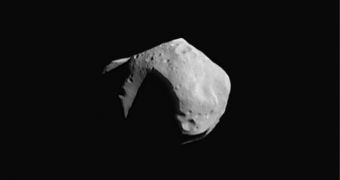Experts have recently begun assessing the extent to which life may be capable of surviving on other worlds by analyzing the limits within which it does so here on Earth. Researchers are now focusing their attention of ancient microbes living under the Earth's crust.
While the role that these animals play in underlying the planet's carbon cycle is considerable, they have been studied only to a limited extent. Now, researchers are beginning to make up for their oversight, and the things they are discovering shed a new light on life's capabilities.
One of the most interesting things about these microbes is the fact that they could account for as much as one tenth of Earth's biomass. At the same time, while that may be true, the organisms living below the crust have nothing to do with those carrying on above.
This discovery is very important because it indicates new limits and time scales at which life can survive. Therefore, if lifeforms got a chance to develop elsewhere in the solar system billions of years ago, they may still endure to this day.
Adaptations such as moving underground are easy to come to from a biological perspective. This is evidenced by the fact that the process appeared here, on a planet that is well suited to supporting life.
Recent studies have also revealed that these dynamic microbial ecosystems can mostly be found inside seawater aquifers. Experts estimate that these structures in fact contain a vast amount of seawater, in addition to one tenth of the Earth's biomass.
These microbes consume hydrocarbons and natural gas, which means that they could in fact be storing carbon within. But this also means that – if moved to Saturn's largest moon Titan – then they could survive on the rich supplies of liquid hydrocarbon that can be found there.
Numerous researchers are now saying that the sub-surface environment is the most interesting place to conduct biological investigations today. These regions are unexplored, and currently any study conducted there is yielding at least a few surprising conclusions.
The problem is that getting there is very complicated. At its thinnest, the planetary crust is a few kilometers thick, which means a lot of drilling if experts want to collect samples directly.
However, the effort is well worth the return. In recent years, experts discovered that some of the microbes living under the crust tend to be millions of years old. They do display some level of metabolism, but the process is barely visible.
It could be that some of microbial colonies investigated thus far were alive at a time when dinosaurs still roamed the land, Daily Galaxy reports.

 14 DAY TRIAL //
14 DAY TRIAL //